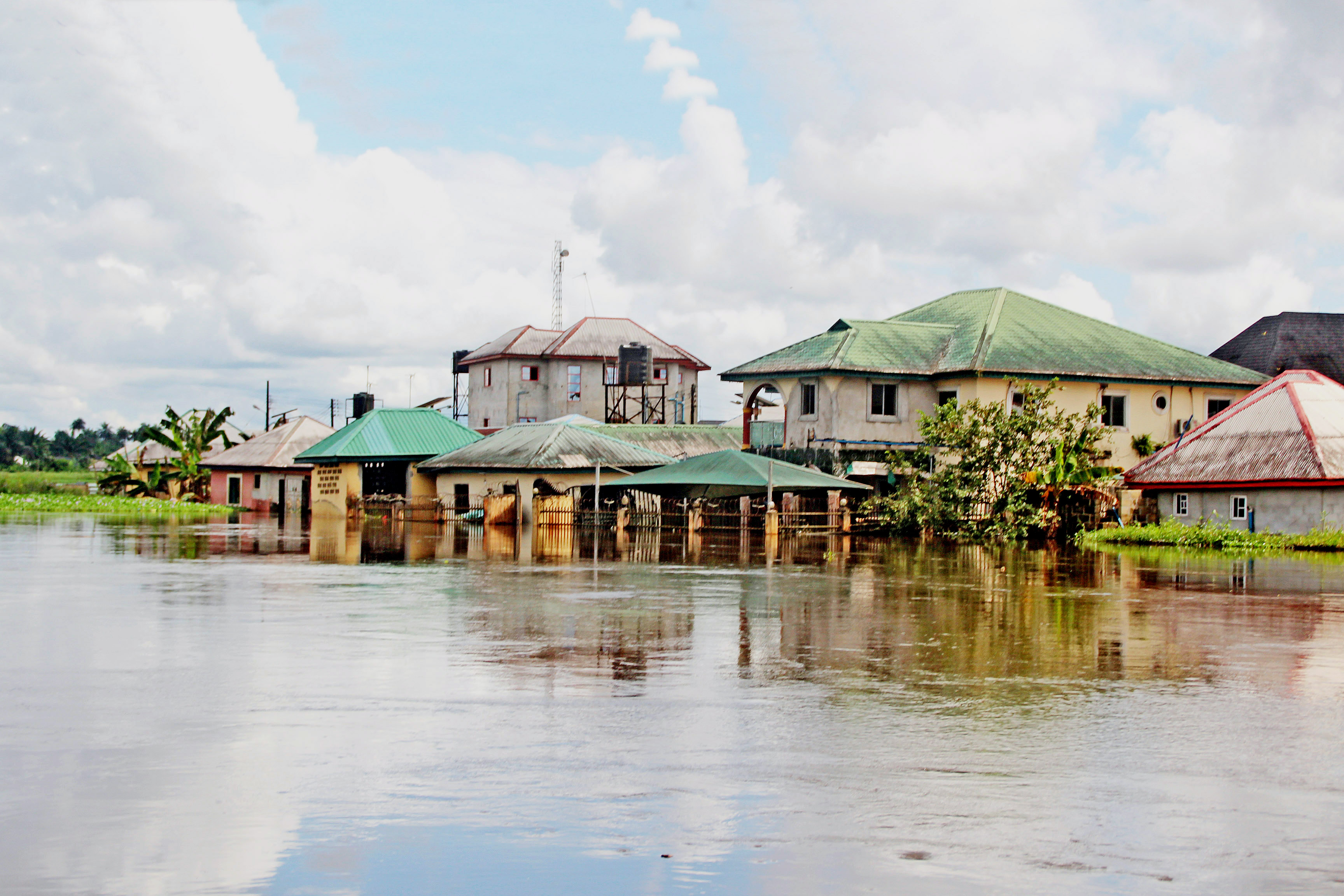A cross-section of flooded residences in Otuoke community, Ogbia Local Government Area of Bayelsa on Friday (19/10/18).
05123/19/10/2018/Anthony Okpu/OTU/BJO/NAN
Adeyemi Adeniran, the statistician-general of the federation, has inaugurated the Nigeria flood impact, recovery and mitigation assessment report.
The report is aimed at assessing the impact of the 2022 floods on households in Nigeria.
According to the National Emergency Management Agency (NEMA), over 4 million Nigerians were affected by flooding in 2022.
Speaking at the inauguration on Wednesday, Adeniran said the survey report was a collaboration between the National Bureau of Statistics (NBS), National Emergency Management Agency (NEMA), and United Nations Development Programme (UNDP).
Advertisement
He said the survey was done in six states including: Anambra, Jigawa, Bayelsa, Delta, Kogi, and Nasarawa.
The statistician-general noted that the report provided important insights into the adaptability and recovery efforts of households after the flooding.
“The report is aimed at assessing and estimating the impact of the 2022 floods that ravaged many parts of the country,” NAN quoted Adeniran saying.
Advertisement
“This is to provide evidence for the government to take necessary palliative measures, as well as put in plans to minimise or forestall any future occurrence.
“The survey was designed to delve into the micro-level effects experienced by households in the most affected states.
“This was done by examining the losses incurred by those households, while also recognising the challenges faced by affected communities.
“This resulted in the destruction of crops, farmland, food stock, farm assets, and personal properties, while simultaneously impacting food availability and accessibility.
Advertisement
“The health sector faced major challenges during and in the immediate aftermath of the floods, with an increase in waterborne diseases, and injuries, among the affected population.
“Access to basic services, including education, road infrastructure, and other essential facilities, was severely impacted, which worsened the situation for many of the affected and slowed down the recovery process.”
While sharing some highlights from the report, Adeniran said Bayelsa faced the highest impact with 99 percent of interviewed households affected in one way or the other.
“This was followed by Jigawa at 94 percent, Nasarawa at 70 percent, Kogi at 70 percent, Delta at 57 percent, and Anambra at 23 percent,” he said.
Advertisement
“Jobs were affected for nearly 80 percent of households, primarily through wage reduction at 69 percent and job loss at 49 percent.
“Food security was also compromised, impacting 49 percent of households, with up to 60 percent of households in rural areas affected.
Advertisement
“By state, Anambra recorded the highest impact by households involved in agricultural activities at 99.1 percent, followed by Kogi at 97.4 percent and Jigawa at 97.1 percent.
“Conversely, Bayelsa had the least effect on crops, though still significant, at 89.8 percent.”
Advertisement
Adeniran said it was crucial that findings from the report were applied meticulously to address the problems and challenges.
“Let me reiterate once again that this report is not just a document; it is a roadmap for action,” the statistician-general said.
Advertisement
“It is a testament to our commitment to the well-being of our citizens and our determination to build a nation that can withstand and recover from the challenges posed by natural disasters like floods.
“As we launch this report, let us reflect on its findings and, more importantly, let us translate these insights into actions that will make a meaningful difference in the lives of those affected.”
Add a comment






